|
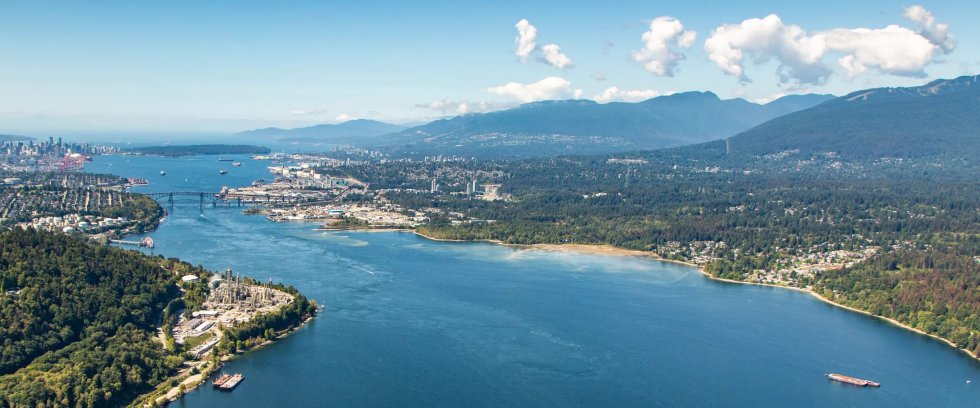
Port of Vancouver Installing New Navigation Aids to Enhance Marine Traffic Safety in Eastern Burrard Inlet
Jan. 15, 2025 - The Vancouver Fraser Port Authority has commissioned the installation of new navigation aids in eastern Burrard Inlet that will enable safer and more efficient ship movements through the busy Second Narrows waterway.
This work includes installing two solar-powered range lights and a sector light off Berry Point, and illuminating the pillars of the Second Narrows Rail Bridge. Installation will start mid-January and is scheduled to be completed in the spring, with the navigation aids expected to be turned on and trialed by the Pacific Pilotage Authority and BC Coast Pilots starting late-April.
What are range lights?
Range lights provide spatial reference points to cargo ships transiting through confined waters such as the Second Narrows waterway. Captains and pilots use these visual markers to centre ships within navigational channels and maintain safe courses. Because their glow is only visible to large ships in transit, range lights are non-disruptive to surrounding communities and ecosystems.
“The new navigation aids will enhance marine safety and offer ship operators moving through the Second Narrows and terminals located in eastern Burrard Inlet more flexibility in their scheduling — in line with our role as a Canada Port Authority to oversee the safe and efficient movement of goods and vessels on port waters,” said Sean Baxter, the port authority’s Acting Director of Marine Operations and Harbour Master. “They will also boost efficiency and fluidity by allowing nighttime eastbound transits for larger ships — increasing the transit windows available for cargo vessels to move through the Second Narrows traffic control zone by up to 38%.”
The navigation aids will support more than 500 cargo ships calls a year to seven marine terminals located in eastern Burrard Inlet and enable large ships to move through the Second Narrows in an eastbound direction at night, increasing transit capacity and fluidity in this key trade area at the Port of Vancouver.
Second Narrows (also called Traffic Control Zone 2) is the only area within the port where nighttime transit restrictions are in place. These restrictions — applicable to vessels above a certain size — are part of a suite of standards and procedures to facilitate safe transit through a narrow and constrained shipping channel and support other safety measures such as tug assist and pilot requirements.
This initiative builds on comprehensive risk and site assessments conducted in collaboration with the Canadian Coast Guard, Pacific Pilotage Authority and BC Coast Pilots.
SOURCE: Vancouver Fraser Port Authority |
|
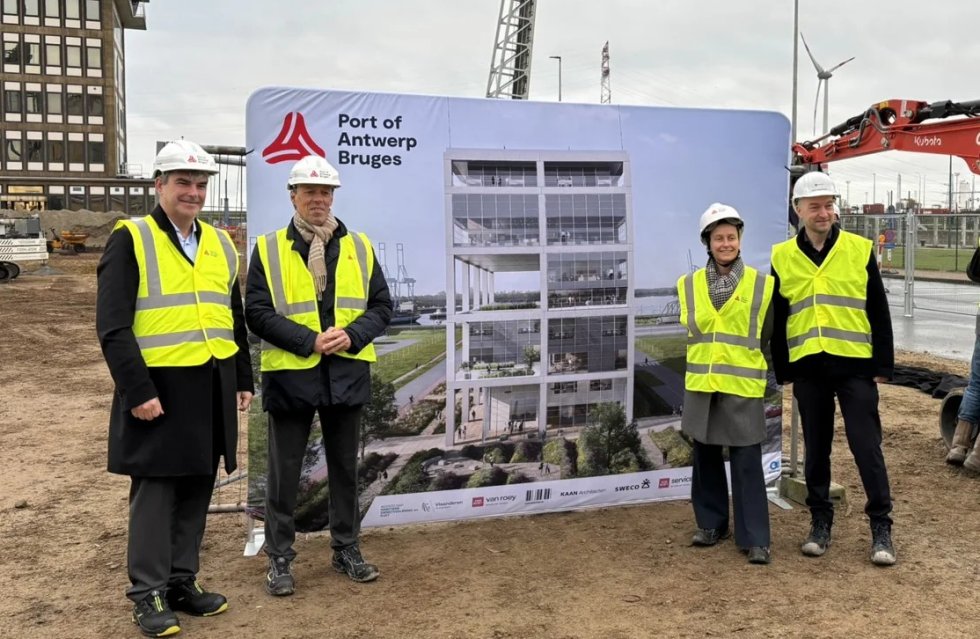
Port of Antwerp-Bruges Kicks-off Construction of New Coordination Center
Dec. 23, 2024 - The Port of Antwerp-Bruges on Dec. 16 officially kicked-off construction of the Antwerp Coordination Center (ACC) at Zandvliet-Berendrecht Lock. This state-of-the-art coordination centre brings together all partners from the nautical chain and optimises the port activities.
The new ACC will be a recognisable orientation point along the river Scheldt. This eight-story building, covering an area of 8,000 m² and 46 metres tall, is being built between Zandvliet Lock and Berendrecht Lock. It will replace the current coordination centre, which was built in the 70s. With a flexible and modular structure that can respond to changes in the future, it will be a central hub where teams such as shipping guidance, lock operators, pilotage and boatmen work closely together.
According to the Port, communal workplace covering 1,000 m² will optimise the communication and coordination within the nautical chain, essential for safe and smooth shipping traffic. The figures underline its importance: in 2023, the port registered 274,132 ship movements, averaging 761 a day or 31 an hour. The ACC plays a pivotal role in managing this flow.
"The Antwerp Coordination Center is not just an operational hub but also a symbol of innovation and sustainability,” said Jacques Vandermeiren, CEO of Port of Antwerp-Bruges. “By combining and facilitating technology and collaboration, we strengthen the functioning of our port and contribute to a future where people and nature take center stage."
Sustainability as a Starting Point
The Antwerp Coordination Center sets a new standard in sustainability. The building is entirely energy neutral thanks to the use of ground energy, a sustainable system that takes heat and cold from the earth, and supplementary energy from solar panels. Thanks to efficient energy savings and its innovative use of technology the ACC requires no fossil fuels and has zero CO2 emissions.
The ACC project has been commissioned by Port of Antwerp-Bruges and Maritime and Coastal Services (MDK), and is being realised by KAAN Architecten, SVR-ARCHITECTS, contractor Van Roey, Van Roey Services and engineering firms Sweco/Blasco.
Construction of the ACC is planned in different phases. The centre will be operational at the end of 2026, after which the present building will be demolished and the surrounding area redesigned.
SOURCE: Port of Antwerp-Bruges |
|
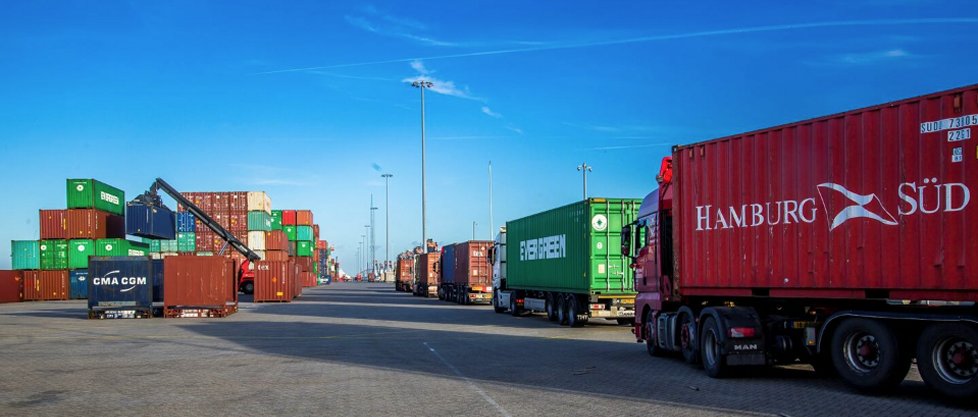
Port of Rotterdam Utilizes Sector-Wide Negotiations for More Efficient Road Transport of Containers
Dec. 5, 2024 - The Port of Rotterdam faces major challenges and opportunities arising from the expected growth in container volume to and from the port. One of those is efficiently handling road transport. The most important stakeholders have signed a declaration of intent to join forces in the ‘sector-wide negotiations for container transport by road’.
Within the sector-wide negotiations, the challenges are being tackled to improve traffic flow, safety and sustainability of road transport to strengthen the port of Rotterdam’s competitiveness. Such initiatives already existed for inland shipping and rail.
Joint Vision and Strategic Focal Points
The sector-wide negotiations on container transport by road actively work on creating the safest, fairest, most sustainable and efficient possible container logistics by road to contribute to the top position of Rotterdam and the Netherlands as the transport country in Europe.
The parties involved are convinced that a joint approach will be able to efficiently accommodate the expected growth in road transport to and from the port. This guarantees continued good operations to the hinterland, within the social preconditions related to safety and sustainability.
The parties focus on six strategic focal points:
- Spreading road transport; more transport outside peak hours
- Developing dynamic port planning
- Pursuing zero emission container transport by road
- Reducing trips with empty containers and no containers; improving the load factor of trucks
- Secure chain for safe port logistics
- Pursuing zero incidents for a safe road chain
Active Working Groups and Fact-Finding Research
The working groups, involving all participating parties, such as transporters, freight forwarders, shippers, terminals, depots, ship agents and the Port of Rotterdam Authority, develop and tackle the focal points. The working groups on the themes of sustainability and safety recently started.
Joint fact-finding research was conducted in parallel with these working groups’ activities. This research offers insight into the implications of the road product with growing container volumes and increasing autonomous developments. Furthermore, the research evaluates the added value of the strategic focal points before they are developed further in the working groups.
The sector-wide negotiations for container transport by road primarily focus on improving the road product in the port of Rotterdam. However, all parties aim for a dynamic and sustainable division of transport over all modalities (road, rail and inland shipping).
SOURCE: Port of Rotterdam |
|
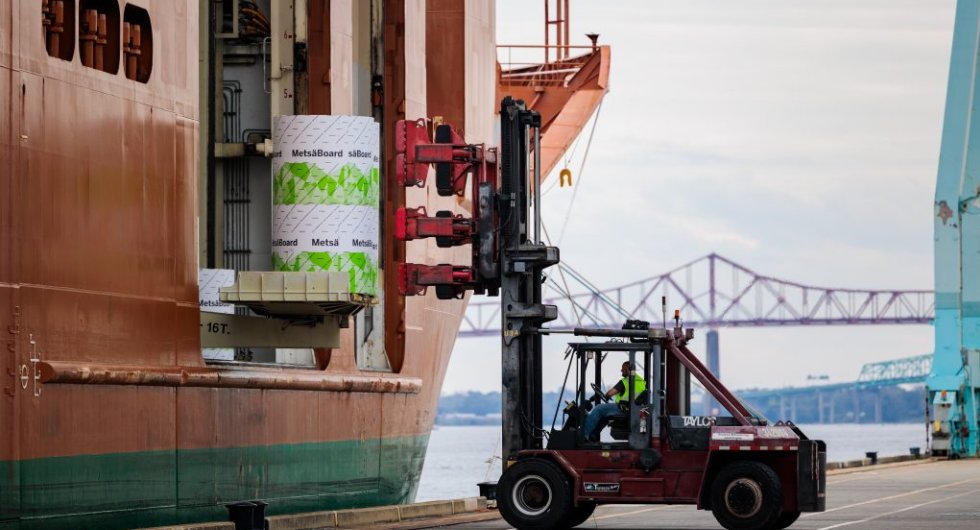
The Art and Science of Handling Breakbulk
By Marcia Pledger
Oct. 12, 2024 - Supply chain directors looking for versatile logistics partners should know that JAXPORT (Jacksonville Port Authority) specializes in handling and storing breakbulk, which is cargo traditionally shipped outside of a container. This type of cargo includes products like paper, food, and heavy machinery.
JAXPORT’s worldwide cargo service, including direct connections to 140 ports in 70 countries, enables these items to regularly cross the docks at the Talleyrand and Blount Island terminals. Terminal operators Enstructure and SSA Marine specialize in all aspects of handling breakbulk cargo, including storage when needed. About 90 percent of the breakbulk that moves through JAXPORT is temporarily stored in one of the facilities that make up the port’s combined 1 million square feet of on-dock warehousing before being shipped out by truck and rail.
Rick Schiappacasse, Director of Cargo Development at JAXPORT, is responsible for attracting new business and strengthening relationships in the breakbulk and bulk (aggregate products like crushed limestone) cargo sectors, especially to and from Latin America.
“When you walk into a big box store, many of the items you see on the store shelves arrived there via a container ship. What many people may not realize is that there is a large volume of cargo that is critical to many industries that is shipped outside of a container by way of breakbulk,” Schiappacasse said.
Schiappacasse joined JAXPORT in 2013 with nearly 45 years of industry experience. He said JAXPORT’s biggest strengths are its location and efficiencies.
“We have an excellent port facility with no vessel congestion,” he said. “We also have a great highway system, going west to California and to the north and south, and fast reach to all Southeast distribution.”
In addition to ocean carrier services, outstanding intermodal connections, and warehousing, JAXPORT’s terminal operators’ experience and skilled labor make Jacksonville especially prime for handling breakbulk.
Each shipment presents unique needs and timeframes. For example, machinery like transformers and generators are 15 to 20 feet high and can weigh as much as 30,000 to 70,000 pounds each. Cargo of this size needs a berth that can handle the load. The heavy-lift cargo berth at the Blount Island Marine Terminal ranks as one of the nation’s highest weight-bearing capacity docks, offering up to 2,000 pounds per square foot of load capacity.
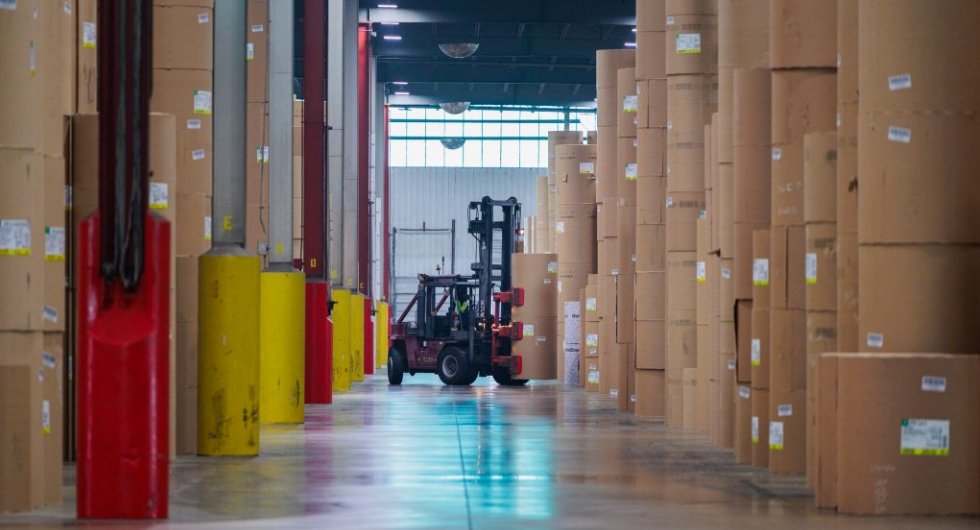
Additionally, forest products such as paper and pulp ship as breakbulk. Paper imported from Finland to make magazines comes as massive cylinder-shaped rolls. Stretched end-to-end, the paper inside these rolls can span up to 7 miles long! Pulp from Brazil is brought in as bales bundled together and is used to make tissues and paper towels. Skills and experience are needed to move this cargo with care. From bags of coffee to machinery and pallets of frozen chicken, JAXPORT and its terminal operators are well-positioned to move breakbulk cargo of all shapes and sizes.
Enstructure
Enstructure operates the largest marine terminal network on the East Coast dedicated to bulk and breakbulk cargo. The business has a network of 21 terminals strategically located near major population hubs along the East Coast, Gulf Coast and the inland river systems of the United States. Enstructure operates at JAXPORT terminals under the brands Portus and Seaonus.
Read the complete article on on JAXPORT's website: JAXPORT Blog |
|
|